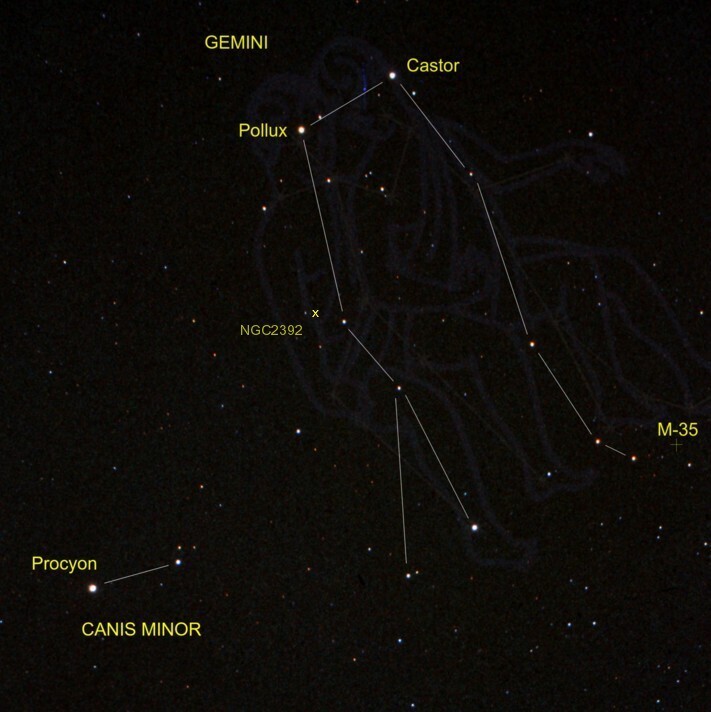This month will feature the zodiac constellation Gemini, which reaches overhead (Zenith) at prime observer time of 8 -9 PM PST in February.
Easily located by the 1st magnitude stars, CASTOR and POLLUX. There are a few interesting objects the can be seen by a small telescope.
CASTOR: This is a beautiful, bright double star that can be split at higher magnifications (100x or more). The combined apparent magnitude is 1.6
But each component is 2.0 and 2.9. The separation is increasing to reach the farthest point in 2065. When I started observing 50 years ago, Castor was a difficult double to split. Now, it’s easy. What lowest magnification can you discern both stars separated? Approximate 50 Light Years distant.
R.A. 7h 35m Dec.+32
M-35: A spectacular Open Star Cluster, sometimes called the “Jewel Box Cluster”. Many bright stars in a “chevron” shape. Use low magnification.
M-35 is 2600 Light Years distant. If the sky is transparent, you might see the distant cluster (NGC 2158) in the background, 14,000 Light Years away!
R.A. 6h 09m Dec. +24
NGC 2392: The “Eskimo” Planetary Nebula. This is a tiny round, green planetary nebula. Use 100 magnification. The details can be seen in large telescopes and astro-imaging.
NGC 2392 is a typical planetary nebula with a faint white dwarf in the core, the last stages of stellar death. Distance is 1400 Light Years.
The image was taken by NASA’s Hubble Space Telescope.
R.A. 7h 29m Dec +21
Clear Skies!
